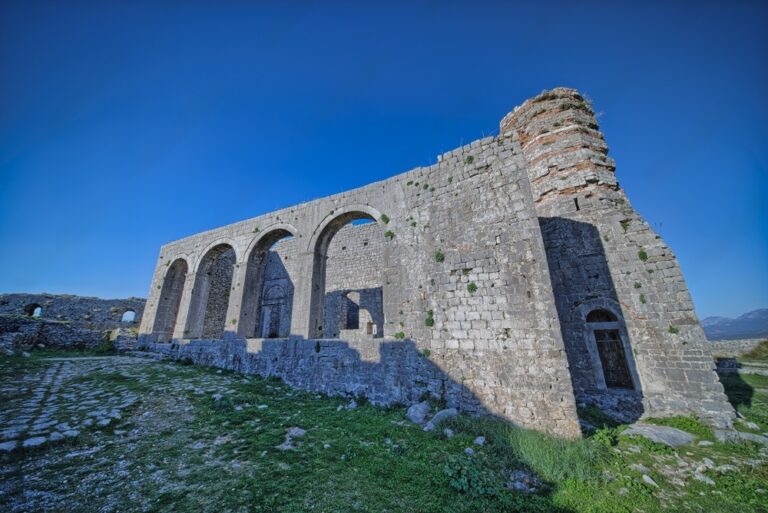Transforming the Past: Architectural Adaptation and Reuse

Old buildings stand as silent witnesses to the passage of time, echoing stories of bygone eras. These architectural gems hold within them a wealth of history, character, and craftsmanship. However, as cities evolve and modernize, the fate of these structures hangs in the balance. Should they be demolished to make way for new developments, or can they be reborn through the transformative power of adaptive reuse?
Architectural adaptation and reuse offer a compelling solution to this dilemma, breathing new life into aging edifices while honoring their heritage. This practice involves repurposing existing buildings for new functions, marrying contemporary needs with the timeless allure of historical architecture. Through innovative strategies and creative thinking, architects and designers can unlock the hidden potential of old structures, revitalizing neighborhoods and enriching communities in the process.
In this exploration of architectural adaptation and reuse, we will delve into various strategies employed to transform old buildings into vibrant hubs of activity. From repurposing industrial warehouses into trendy lofts to converting historic churches into cultural centers, the possibilities are as diverse as they are inspiring. Join us on a journey through the realms of creativity, ingenuity, and preservation as we celebrate the art of breathing new life into the old.
Section 1: Embracing the Past
Before embarking on the journey of adaptation, it is essential to embrace the inherent beauty and character of existing buildings. Each structure tells a unique story, reflecting the architectural styles, materials, and craftsmanship of its time. Whether it’s the ornate facades of Victorian-era townhouses or the industrial charm of old factories, these buildings possess a tangible connection to the past that cannot be replicated.
One exemplary case of embracing the past through adaptive reuse is the High Line in New York City. What was once an abandoned elevated railway has been transformed into a lush urban park, seamlessly blending nature with industrial remnants. By preserving the railway’s original structure and repurposing it for recreational use, the High Line serves as a testament to the power of embracing history while envisioning a sustainable future.
Similarly, the Tate Modern in London stands as a beacon of architectural adaptation, having been repurposed from a disused power station into one of the world’s leading contemporary art museums. The building’s massive turbine hall, once a cavernous space filled with machinery, now serves as a dynamic venue for large-scale installations and exhibitions. Through sensitive restoration and adaptive reuse, the Tate Modern honors the industrial heritage of its site while fostering cultural enrichment for generations to come.
Section 2: Reimagining Spaces
One of the most exciting aspects of architectural adaptation is the opportunity to reimagine spaces in unexpected ways. Old buildings often present unique challenges, such as obsolete layouts or structural deficiencies, but these constraints can spark creativity and innovation. By thinking outside the box, architects can transform limitations into opportunities, breathing new life into forgotten spaces.
Consider the case of repurposing old warehouses into vibrant mixed-use developments. These cavernous structures, once home to industrial operations, offer a blank canvas for creative adaptation. By introducing flexible floor plans, communal amenities, and green spaces, architects can transform warehouses into dynamic hubs where residents, workers, and visitors coexist harmoniously. The Pearl Brewery in San Antonio, Texas, is a prime example of this approach, where former brewery buildings have been repurposed into a thriving community with shops, restaurants, offices, and residential lofts.
Another innovative example of reimagining spaces is the conversion of obsolete infrastructure into cultural landmarks. Old water towers, grain silos, and railway stations have been transformed into iconic venues for arts, entertainment, and education. The Zeitz Museum of Contemporary Art Africa (MOCAA) in Cape Town, South Africa, occupies a historic grain silo complex, showcasing the adaptive reuse of industrial heritage to create a world-class cultural institution. By repurposing the silos’ cylindrical chambers as exhibition galleries, MOCAA demonstrates how architectural adaptation can elevate the cultural landscape while preserving the soul of a city.
Section 3: Sustainable Transformation
In an age of increasing environmental awareness, sustainable design practices play a crucial role in architectural adaptation and reuse. By repurposing existing buildings, rather than constructing new ones, we can significantly reduce the environmental impact of urban development. Additionally, adaptive reuse presents opportunities for integrating green technologies, enhancing energy efficiency, and promoting resource conservation.
The renovation of historic buildings for energy efficiency is a compelling example of sustainable transformation. By upgrading insulation, installing efficient HVAC systems, and incorporating renewable energy sources, architects can minimize energy consumption and carbon emissions without compromising the building’s historical integrity. The Bullitt Center in Seattle, Washington, is a pioneering example of this approach, having achieved net-zero energy and water use through a combination of passive design strategies and advanced technologies. As one of the greenest commercial buildings in the world, the Bullitt Center demonstrates how sustainability and historic preservation can go hand in hand.
Furthermore, adaptive reuse presents opportunities for adaptive landscaping and urban greening initiatives. By reclaiming vacant lots, parking areas, and underutilized spaces around existing buildings, architects can create vibrant outdoor environments that enhance biodiversity, mitigate urban heat islands, and promote community engagement. The High Line in New York City exemplifies this synergy between architecture and ecology, with its verdant plantings, wildlife habitats, and public gathering spaces enriching the urban fabric while reducing the city’s carbon footprint.
Section 4: Community Engagement and Cultural Preservation
At the heart of architectural adaptation and reuse lies a profound commitment to community engagement and cultural preservation. Old buildings are not just physical structures; they are repositories of collective memory, cultural identity, and social significance. By involving local stakeholders in the adaptive reuse process, architects can ensure that projects reflect the needs, aspirations, and values of the communities they serve.
One inspiring example of community-led adaptive reuse is the Detroit Artists Village in Michigan, where residents have transformed abandoned houses and vacant lots into a vibrant arts district. Through grassroots initiatives, such as community murals, pop-up galleries, and neighborhood cleanups, the Detroit Artists Village has revitalized blighted areas, fostered artistic expression, and empowered residents to reclaim ownership of their surroundings. By harnessing the power of creativity and collaboration, this grassroots movement demonstrates how architectural adaptation can catalyze positive social change from the ground up.
Moreover, adaptive reuse offers opportunities for preserving intangible cultural heritage alongside physical structures. By safeguarding traditional building techniques, craftsmanship, and local narratives, architects can ensure that the spirit of a place endures through generations. The restoration of historic landmarks, such as the Forbidden City in Beijing, China, or the Colosseum in Rome, Italy, involves not only preserving architectural features but also safeguarding the stories and traditions embedded within these iconic sites. Through meticulous research, documentation, and interpretation, architects can breathe new life into old buildings while honoring the cultural legacy they represent.
Conclusion
Through creative vision, thoughtful design, and community collaboration, we can transform old buildings into vibrant spaces that celebrate history, foster sustainability, and inspire innovation. As we continue to reimagine the possibilities of our built environment, let us embrace the challenge of preserving our architectural heritage while embracing the opportunities of tomorrow. In doing so, we honor not only the buildings themselves but also the stories they hold and the communities they serve. So, let us raise our gaze to the skyline, where old structures stand as monuments to resilience and reinvention, testaments to the enduring spirit of adaptation.
